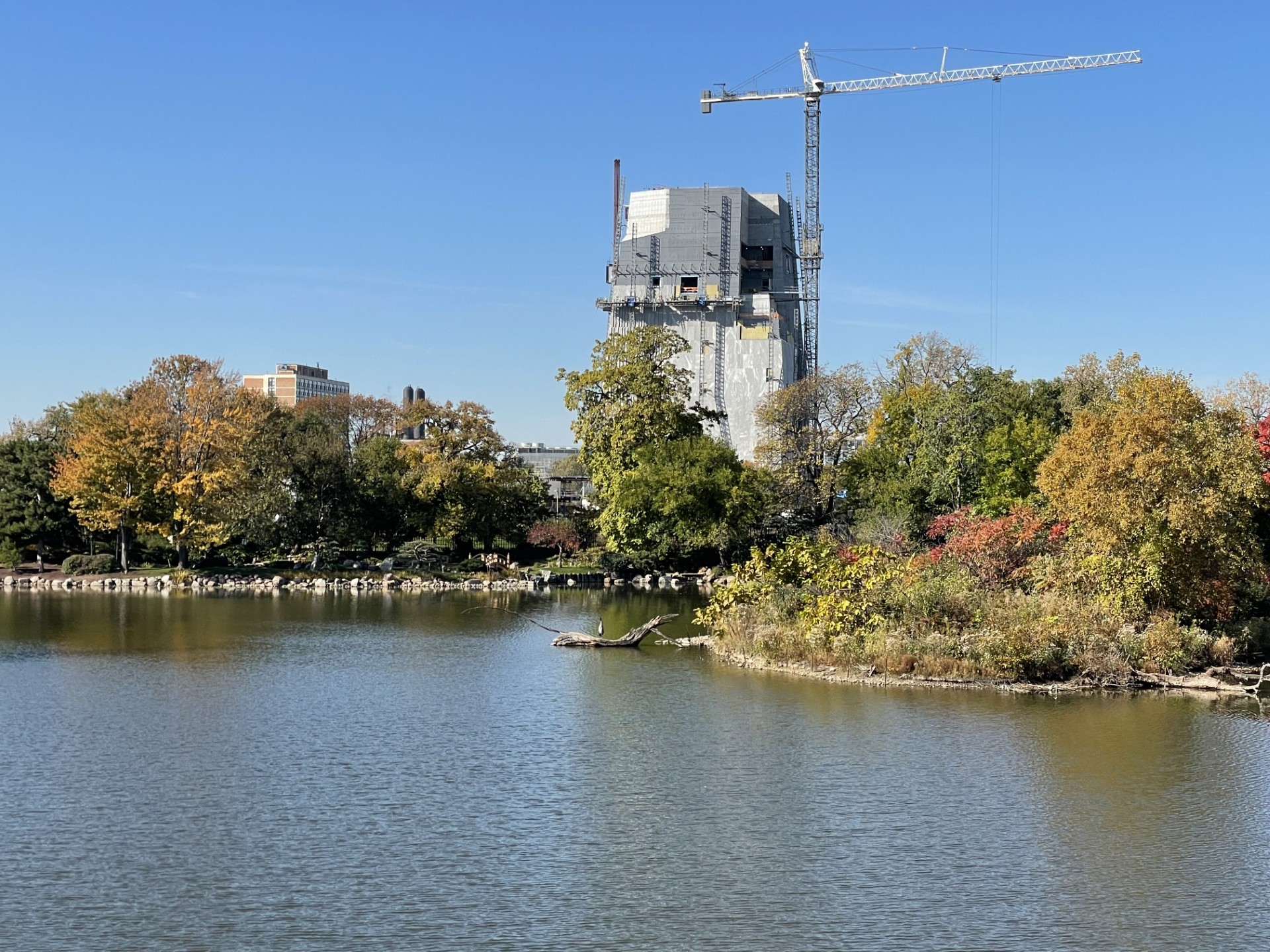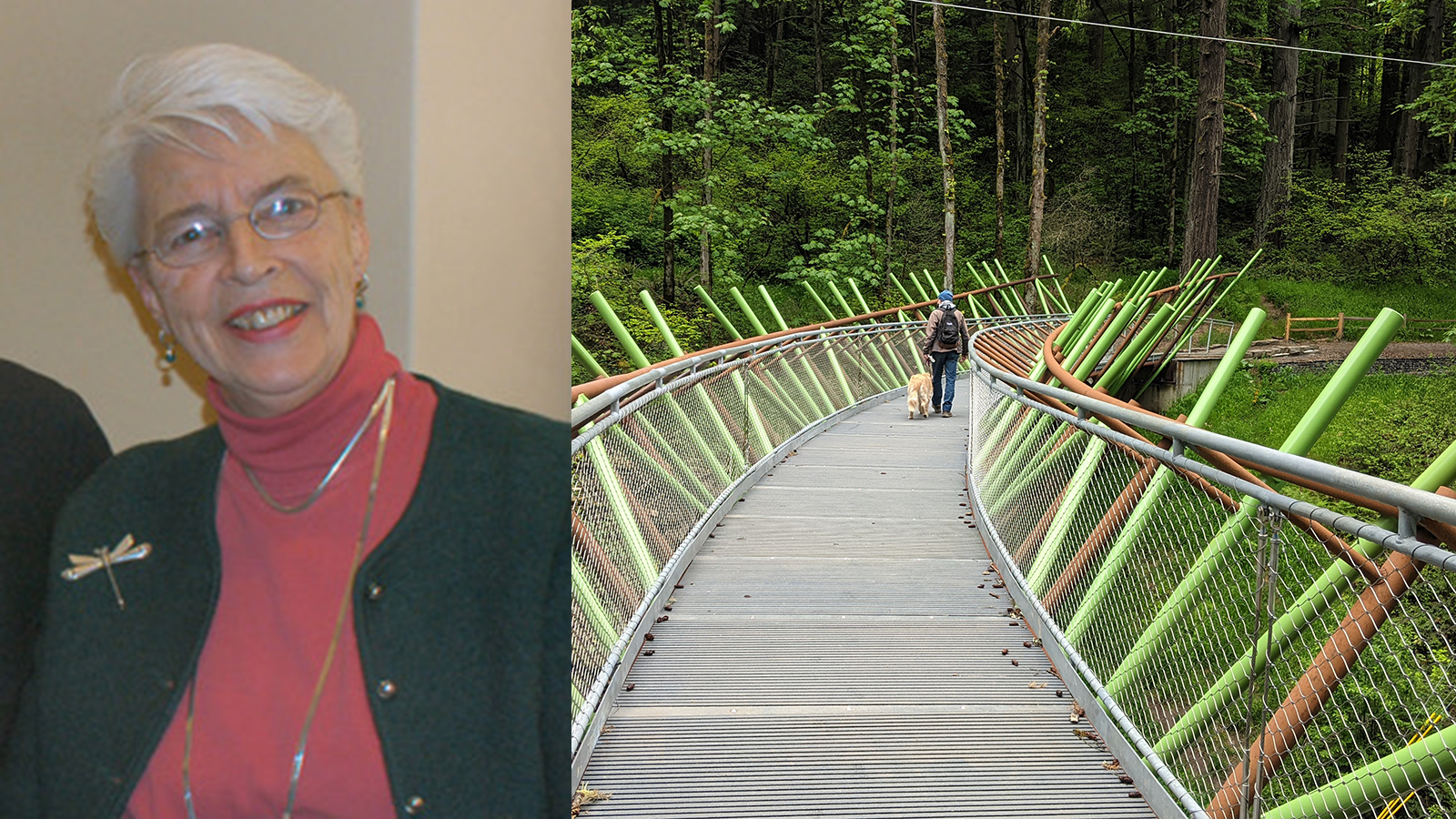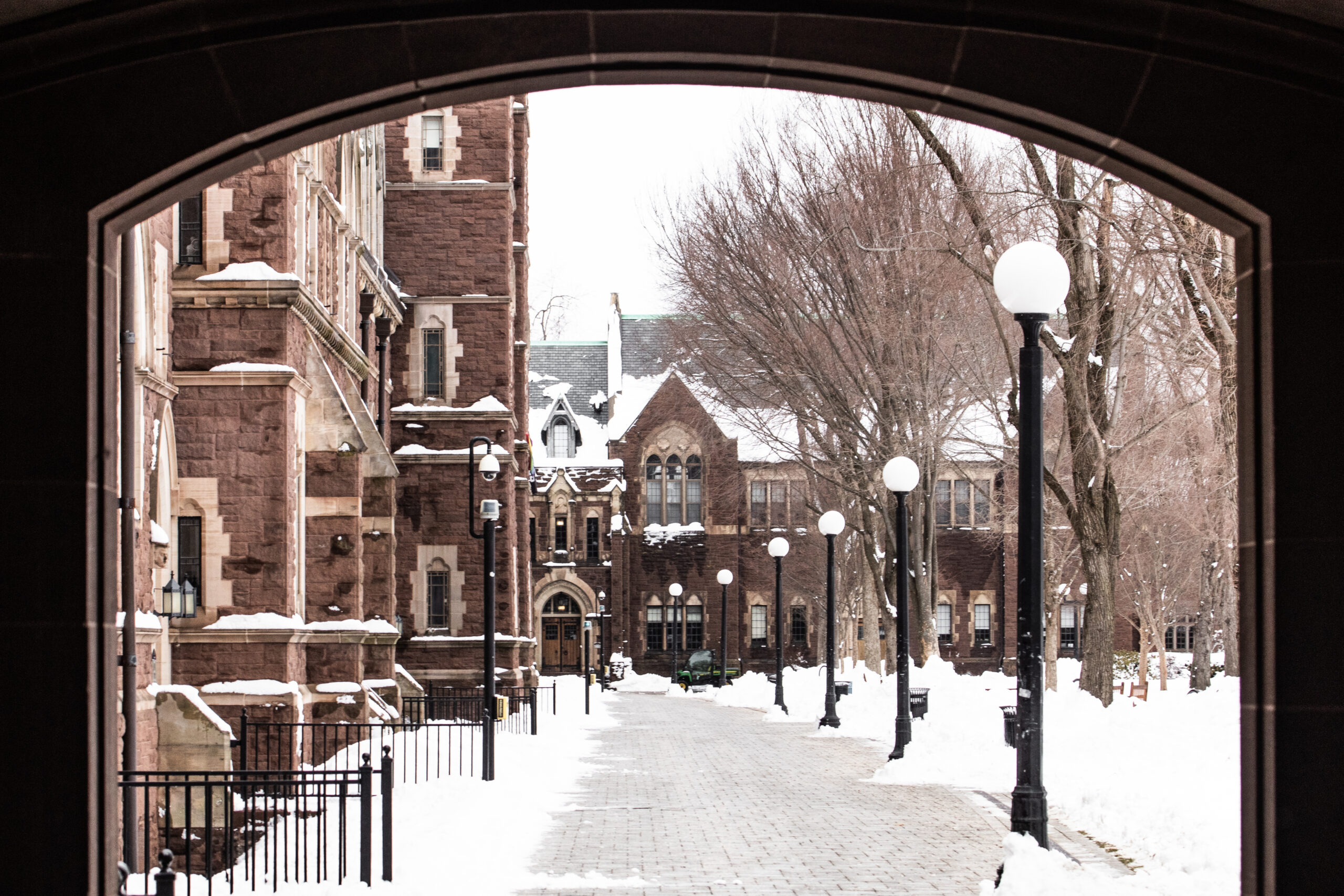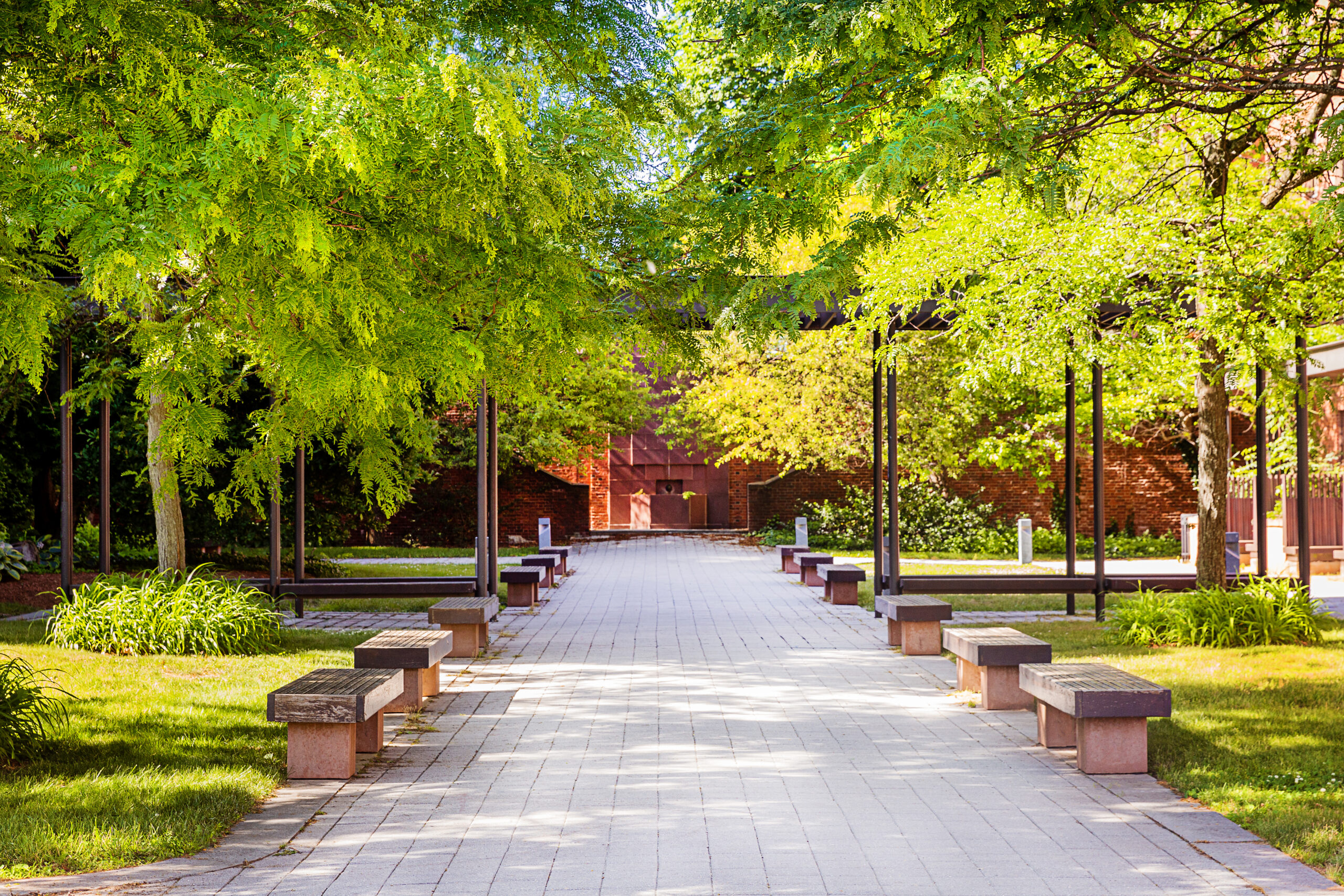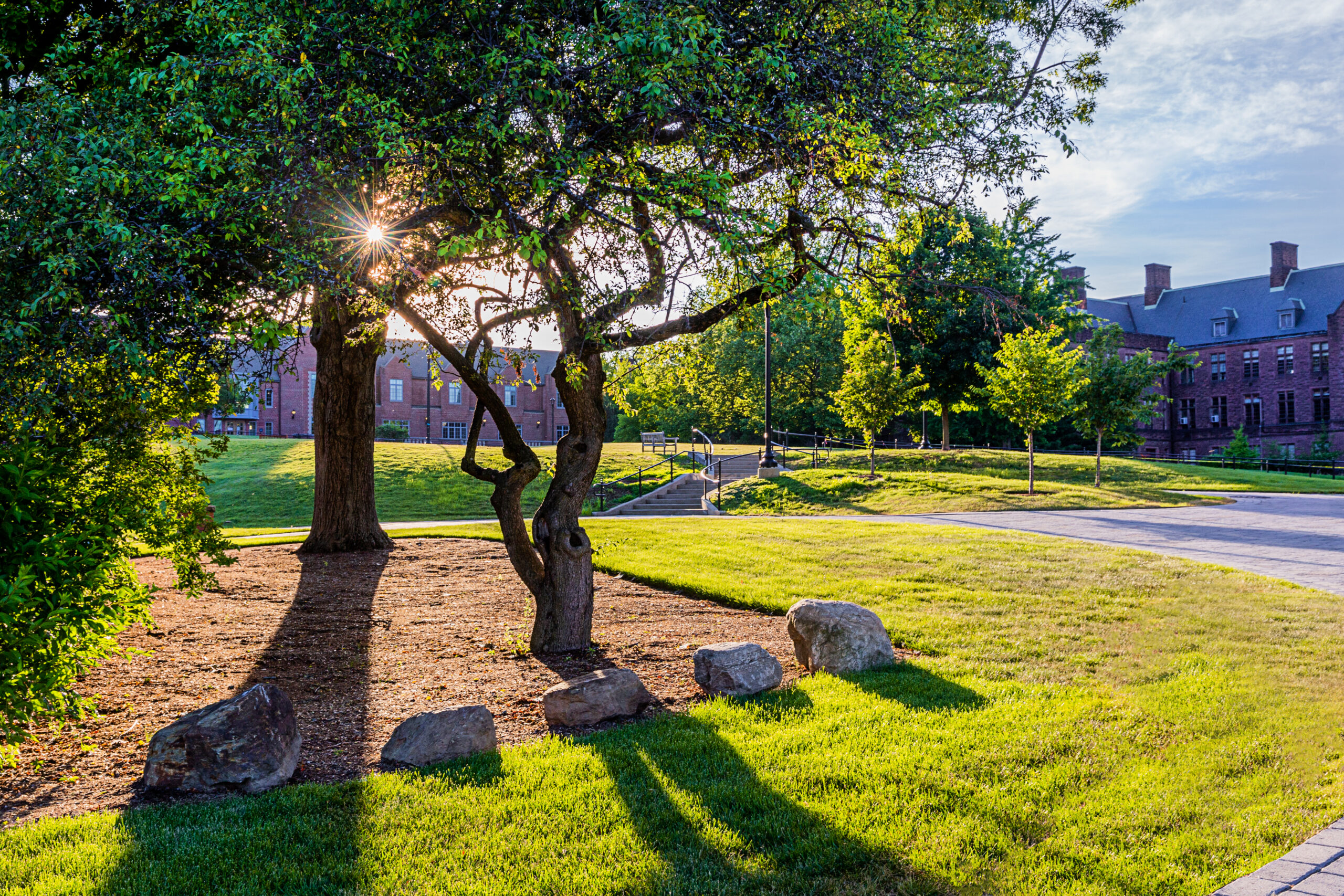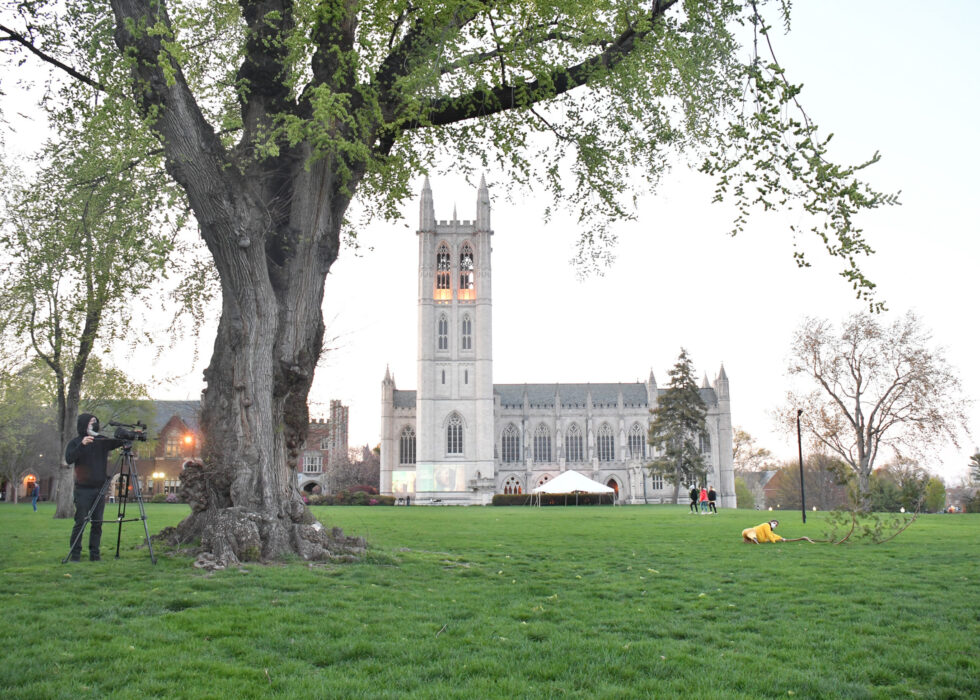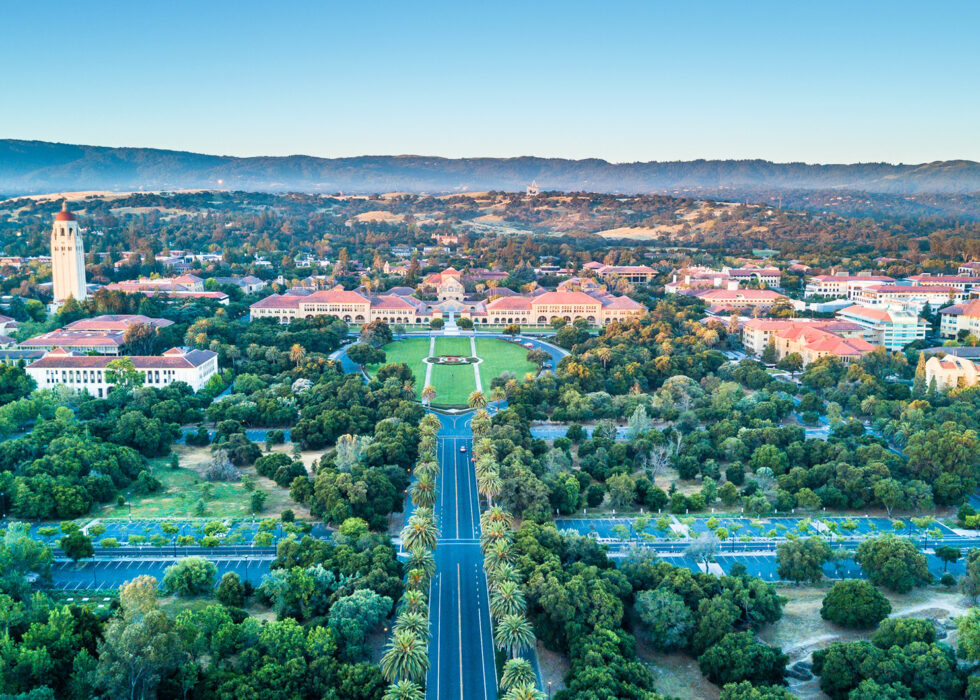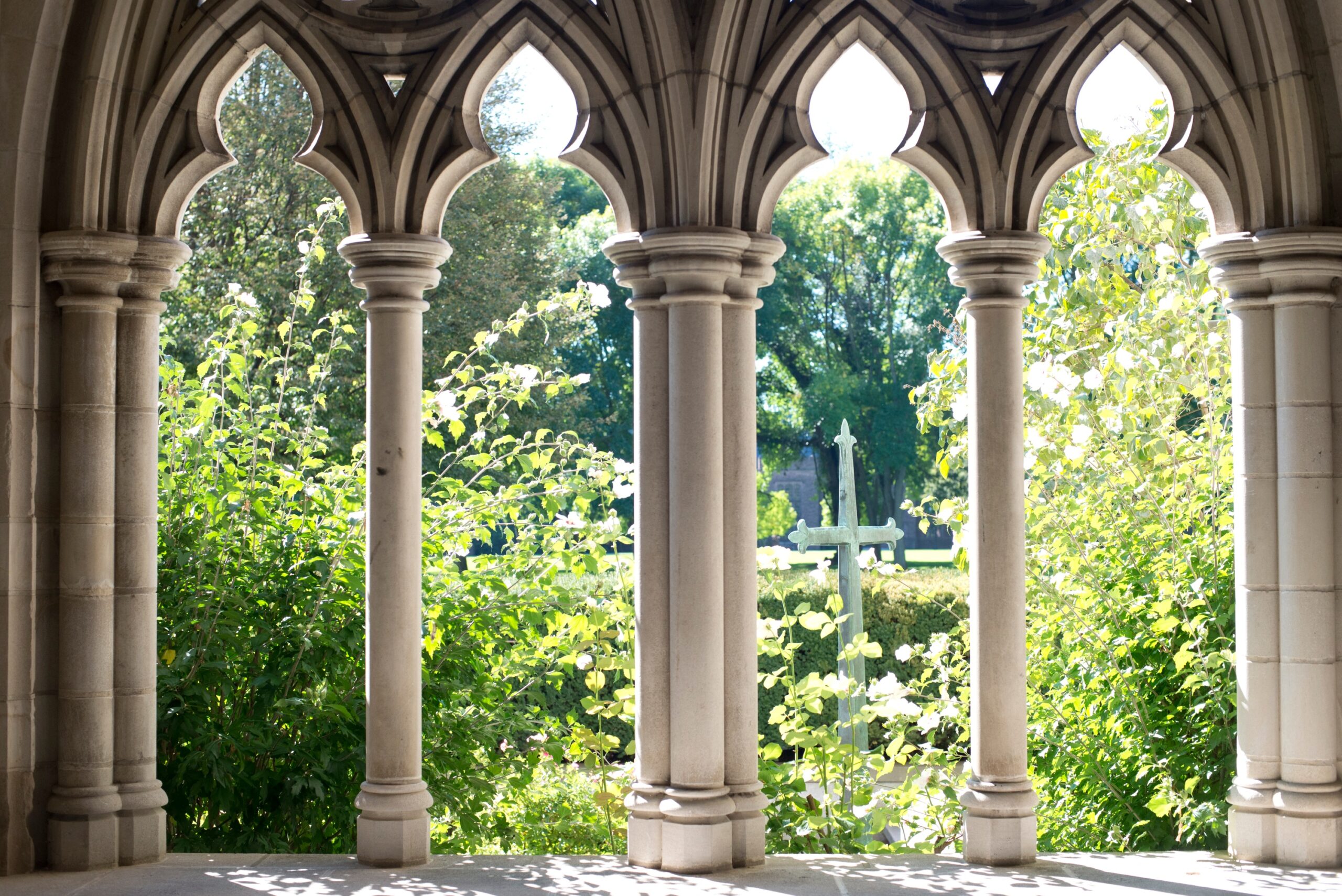
Hartford, Connecticut
In 1872, Olmsted returned to his hometown of Hartford, CT, to contribute to the planning and design of Trinity College.
About Trinity College
In 1872, Olmsted returned to his hometown of Hartford, CT, to contribute to the planning and design of Trinity College. In post-Civil War America, Olmsted believed universities should play a critical role in advancing democracy. As he saw it, the physical environment– buildings and grounds – contributed to both the success of education as well as the shaping of character.
Olmsted suggested several potential locations for Trinity College and sketched out his vision. “A well-designed campus,” wrote Olmsted to the college president, would foster “acquisition of the general quality of culture which is the chief end of a liberal education.”
Inspired by British design, the main campus includes a quadrangle that frames the campus’ iconic Long Walk. The Long Walk is positioned to orient campus buildings along Rocky Ridge.
Olmsted and his sons remained involved at Trinity College until the early 1890s, advising the planning and development of the campus for over 20 years.
Today, many species of trees now shade the quadrangle, and in 2023 the Trinity College campus became an accredited Level I arboretum. The Long Walk is still an integral part of Trinity’s campus and alumni cherish the commencement march along its well-worn path and onto the quad.
Shared Spaces
Spotlight on… Trinity CollegeTerwilliger Parkway
Terwilliger Parkway is characterized by slower speeds, curves following the contours of the hills, and opportunities to leisurely enjoy scenic vistas and outdoor recreation made possible by a wooded buffer zone of about 100 feet on both sides.
U.S. Capitol Grounds
In 1874, Congress passed an act making Olmsted the first landscape architect of the United States Capitol.





